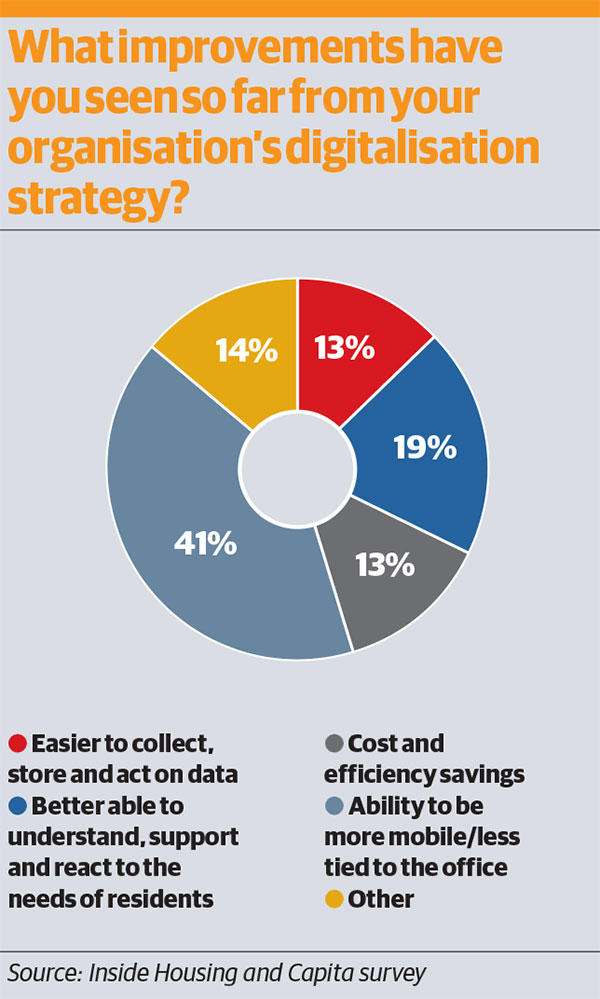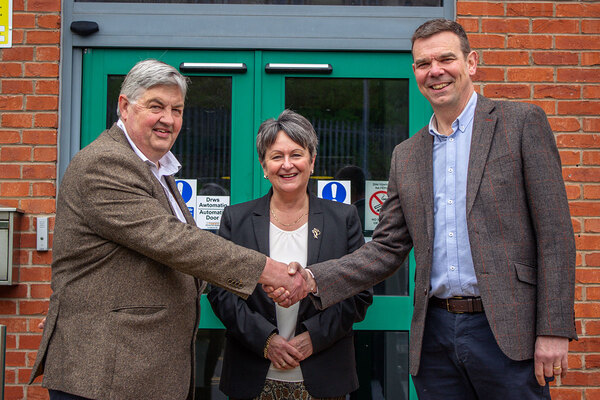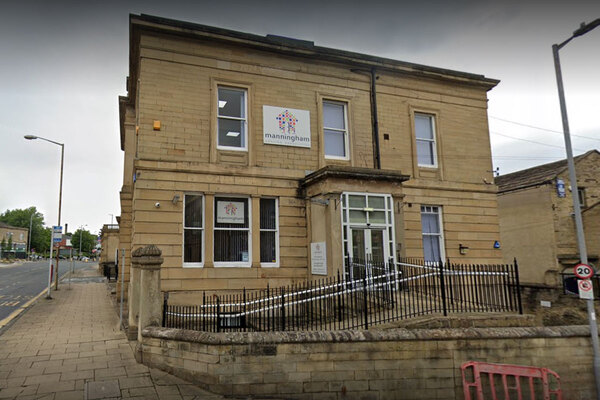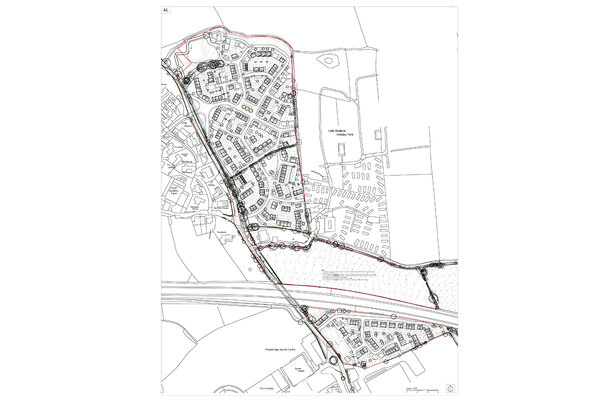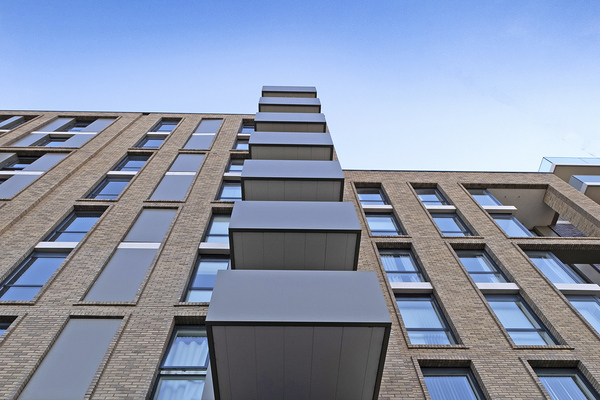Are HAs embracing digitisation?
A survey by Capita IT & Networks, in association with Inside Housing, investigates how housing associations are interacting with their customers. Illustration by Getty
In association with:

We live in an age in which how we interact and transact is becoming increasingly digital. Even if, rightly, the housing sector has to remain mindful of digital inclusion for vulnerable citizens, there is nowadays a widespread expectation that information, support and answers will be available to us digitally, whether via apps, self-service tools or ‘smart’ home systems.
From a business perspective, this includes how housing associations manage and integrate their digital systems; how they collect, interrogate, use and share data; and the role that digitalisation and digitisation can play in improving performance, procurement decisions and driving transformation, all of which remain hot topics of conversation.
To get under the skin of these critical issues, Inside Housing and Capita IT & Networks came together to canvas the sector on its current approach to, and appetite for, digitisation, digital transformation and technology-driven change and improvement. In essence, is digital enabling the sector to work better or smarter, or is there still work to do?
Our survey of senior housing professionals included managers, directors and assistant directors, heads of service, and chief executives (among others) within predominantly housing associations, ALMOs and local authorities. A total of 240 people responded, a higher than average response rate, indicating this is a topic – both in terms of its challenge and opportunity – that resonates with the sector.
“Everybody talks digital, but that is often all it is”
So, what did we find? First, in terms of engagement and interaction with tenants, it does appear the housing sector is playing catch-up when it comes to digital. When asked how customers ‘predominantly interact with you nowadays’, nearly two-thirds of respondents (63%) said this was by phone or a call centre. Digital, in the form of email, text messaging and live chat, was gradually coming more into the mix, cited by 23%, but, argues Ian Gibson, senior business development manager at Capita IT & Networks, this shows there is still a job to be done in terms of effecting genuine, sustained digital transformation.
“The 63% figure did not surprise me, though it is disappointing. Everybody talks digital, but that is often all it is. When you see results like this – the fact most people are still going through a call centre – it speaks volumes. It says to me that people are building customer portals but there is no thought about “how can we build something that people will come back and use?”. If you build something that people won’t re-use, straight away the phone will become the default methodology,” he says.
Behind the curve
There was also a sense of the sector being behind the curve when it came to the use, and integration, of digital systems. More than three-quarters (76%) of respondents said they used between one and five systems to manage their view of customers and a fifth (20%) juggled between six and 10. Three per cent used 11-20, while for 2% it was a whopping ‘more than 20’.
“The fact 25% of organisations say they use six systems or more is scary. And I would guess that, for those saying they use one to five, there will be very few where it is just one,” says Mr Gibson.
More than four out of 10 either agreed (36%) or agreed ‘strongly’ (6%) that their data was well integrated within their customer service systems. For Mr Gibson, however, this still leaves 58% we should be worried about. “For that sort of number to be neutral, disagree or strongly disagree that their systems are well integrated, well that’s phenomenal again,” he says.
The challenge for technology firms, therefore, is to be showing housing associations and housing sector professionals what ‘good’ looks like in this context, emphasises Mr Gibson, with the role and value of application processing interface (API) software being a good case in point.
In our survey, half (50%) of respondents admitted that they had no idea whether their organisation was using APIs to interconnect or share data, with otherwise an even 25% split between ‘yes’ and ‘no’.
“We see APIs as the real methodology to be used behind integration. People use APIs for a number of reasons, but the best way is to get live data and transact on it. It is amazing that 50% of people don’t know if they use them. And that goes back to the integration point – in my opinion, you can’t have good integration without using APIs,” argues Mr Gibson.
“The fact 25% of organisations say they use six [digital] systems or more is scary”
Given the previous findings, it was perhaps unsurprising that respondents were relatively cautious about whether their organisations were doing a good job currently in terms of using data or analytics. Just over half felt their organisation was using data ‘very’ or ‘somewhat’ effectively (12% and 44% respectively), with slightly fewer (8% ‘very’ and 39% ‘somewhat’) feeling the same way about analytics.
So, is the issue a lack of leadership around digital? Superficially no, as our survey suggested that nearly two-thirds (65%) felt their organisation did have a defined digital strategy.
Moreover, the vast majority felt that this was generating practical day-to-day improvements. These included easier storage, collection and acting upon data (13%); better understanding, support of and reaction to the needs of tenants (19%); cost and efficiency savings (13%); and, most of all, the ability to be more mobile or less tied to the office (41%).
Facing challenges
But for Mr Gibson there is an elephant in the room underlying these findings. “What was interesting to me was that 101 people did not answer the ‘improvements’ question. To me, that says it was because they did not know. I would take it back to our first question – why are 63% of your interactions with customers still coming over the telephone? There is a challenge there for people,” he points out.
Lack of appropriate resources or skills (40%), budget constraints (33%), time pressure and cultural resistance (both 28%), and community or client resistance (20%) were all cited by respondents as barriers to implementing a digital strategy.
More positively, however, if those barriers could somehow be overcome, self-service tools (83%), data analytics (43%), automation (40%), predictive information (37%), artificial intelligence (27%) and ‘Amazon-style’ algorithms (25%) were all seen as the future for improving how tenants engage and communicate with services.
“Self-service is key, it really is,” agrees Mr Gibson. “You have got to build something that will make people come back. Although digital strategy is a wide-arching thing, the customer should be at the heart of it.
“If a customer is still having to pick a phone up to talk to somebody about something, your digital strategy is not working – that is the end of it,” he adds.


